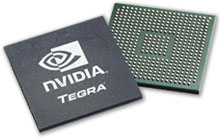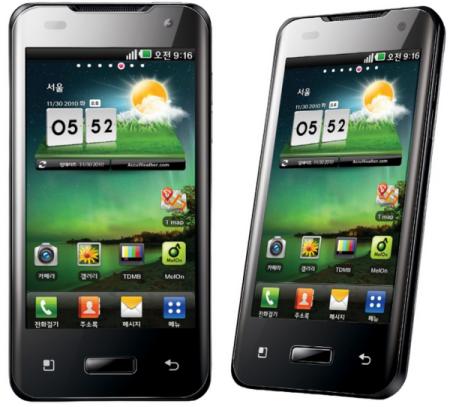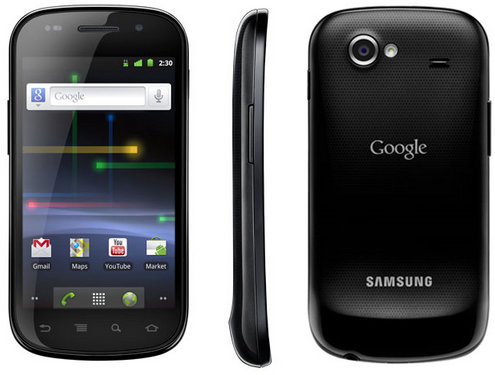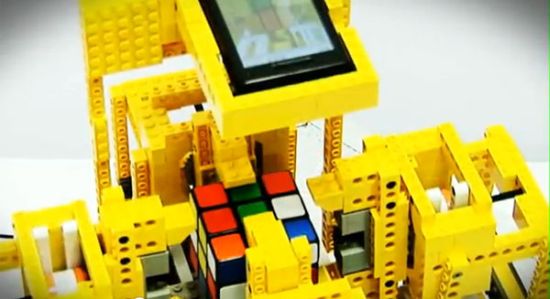NVidia Tegra 2 is currently one of the most powerful processor used in smartphones and tablets such as the upcoming LG Optimus 2X smartphone or the new version of Samsung Galaxy Tab. NVidia describes the processor as follows: NVIDIA® Tegra™ 2 is the world’s most advanced mobile processor, featuring the world’s first mobile dual-core CPU for up to 2x faster Web browsing; the world’s only ultra-low power (ULP) NVIDIA® GeForce® GPU for up to 5x faster gaming; and the world’s first mobile 1080p HD video processor for flawless HD video conferencing and playback. Get never-before-seen experiences on a mobile device with NVIDIA Tegra. NVidia Tegra 2 is based on a dual core Cortex A9 running up to 1GHz, supports 32-bit DDR2 RAM and features NVidia Geforce GPU with OpenGL ES 2.0 support. Contrary to many other companies finding the development kit, documentations and tools is straightforward. Once you get to […]
LG Optimus 2X – First Dual Core NVidia Tegra 2 Smartphone
LG has just introduced the Optimus 2X (codenamed the LG Star), the first smartphone to run a dual-core processor namely Nvidia Tegra 2 @ 1GHz. The device will be initially available in Korea (Model: LG-SU660) in January 2011, and later in the year in Europe, then the rest of Asia (Model: LG-P990). LG Optimus 2X will be shipped with Android 2.2 upgradeable to Android 2.3 (Gingerbread). The phone features a 4-inch WVGA screen, 8GB of internal memory, microSD support (up to 32GB), HDMI output, Digital Multimedia Broadcasting (DMB), DLNA support, an accelerometer, a gyro sensor, 1080p MPEG-4/H.264 playback and recording and finally 2 cameras: an 8 megapixel back camera plus a 1.3 megapixel front camera for video calls. Please see the video below where the Optimus 2X is compared to the iPhone 4 and the Samsung Galaxy S. The LG Star is really the clear winner in terms of performance. […]
Google Nexus S and Android 2.3 (GingerBread) Unveiled
After much speculation, Google and Samsung finally lifted the lid on the Nexus S, the successor of Nexus One. It will be available for sale (unlocked) in the US on the 16th of December (Best Buy – 529 USD) and the UK on the 20th of December (Carphone Warehouse – 549.95 GBP) Samsung/Google Nexus S runs Android 2.3 (gingerbread) on a processor based on cortex A8 (Hummingbird) clocked at 1 GHz, with 512 MB RAM, 16 GB internal storage. The full specs are available on Google Nexus S page. One interesting new feature is Near Field Communications (NFC) that will allow the device to read RFIDs (e.g. for Interactive Advertising) and behave like a contact less card. So the phone might be used to make payments in the future and replace your credit/debit card. It could also be used as a contactless stored value smart card similar to the Octopus […]
Nufront 2GHz ARM Cortex-A9 for Desktop, Laptop and Netbook – NuSmart 2816
Nufront (新岸线) is a high tech company based in Beijing, dedicated to wireless broadband communication and broadcast, IC design, video search and digital imaging technologies. Nufront showed off their “low-power high performance” mini-PC based on their new NuSmart 2816 chipset at ARM Techcon 2010. NuSmart 2816 is based on a dual-core Cortex-A9 @ 2GHz with Mali-400 GPU. They plan to sell the chip for around 30 USD and expect ARM-based mini-PC to sell for around 200 USD retail. You can download NuSmart 2816 Product Brief for further details. As you can see from the diagram below, NS2816 can support all features (Ethernet, Wifi, GPS, USB, I2S Audio, SATA II, MMC/SD support, VGA, HDMI or LCD video output) that are now expected in modern desktops or laptops. Video playback currently uses around 2 Watts (chip samples) and they target 1.5 Watt for video playback in the final release of their chipset […]
ARM Android Based Rubiks Cube Solver
David Gilday – a chip designer at ARM – has got two hobbies: Playing Lego and Rubik’s Cube. He must have been tired to turn the sides of the game manually so he designed a robot to solve the Rubik’s Cube within an average of 15 seconds. So here’s how it works: A Robot built with Legos using 6 motors and an Android phone connected to it. He’s using an ARM11 platform running Android (Looks like a Google Nexus One to me). You mix the Rubik’s Cube, place it in the middle of the robot, then it starts.. the smartphone scans all faces of the Rubik’s Cube (with the back camera of the phone), an algorithm calculates the moves (using a 300MB database), then the robot turns the Rubik’s Cube to solve the puzzle and finishes with a nice spin once the 3D-puzzle is solved. The algorithm is written in […]






